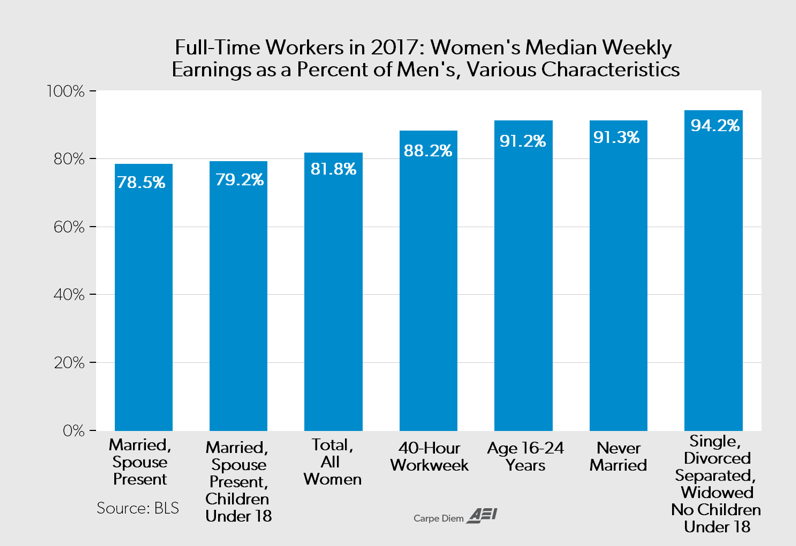
Via AEI:
The Bureau of Labor Statistics (BLS) releases an annual report every year on the “Highlights of Women’s Earnings” (since the BLS report actually analyzes equally both men’s and women’s earnings, one might ask why the report isn’t simply titled more accurately “Highlights of Earnings in America”?). Here’s the opening paragraph from the most recent BLS report “Highlights of Women’s Earnings in 2017” that was released last month:
In 2017, women who were full-time wage and salary workers had median usual weekly earnings that were 81.8 percent of those of male full-time wage and salary workers. In 1979, the first year for which comparable earnings data are available, women’s earnings were 62 percent of men’s. Most of the growth in women’s earnings relative to men’s occurred in the 1980s and 1990s. Since 2004, the women’s-to-men’s earnings ratio has remained in the 80 to 83 percent range.How do we explain the fact that women working full-time last year earned less than 82 cents for every dollar men earned according to the BLS? Here’s how the National Committee on Pay Equity (NCPE) explains it:
The wage gap exists, in part, because many women and people of color are still segregated into a few low-paying occupations. Part of the wage gap results from differences in education, experience or time in the workforce. But a significant portion cannot be explained by any of those factors; it is attributable to discrimination. In other words, certain jobs pay less because they are held by women and people of color.